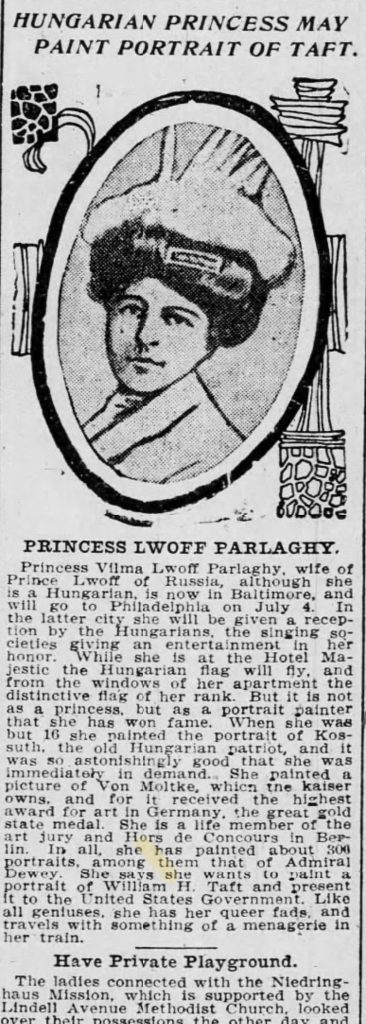It Happened on
July 03, 1908
Listen to NotebookLM opine about this article
Princess Vilma Lwoff-Parlaghy, the wife of Prince Lwoff of Russia and a native of Hungary, is currently in Baltimore and will soon travel to Philadelphia on July 4. In Philadelphia, she will be honored with a reception by the Hungarian community, with singing societies organizing an entertainment in her name.
At just 16 years old, Princess Vilma painted a portrait of Lajos Kossuth, the revered Hungarian patriot.*
During her stay at the Hotel Majestic, the Hungarian flag will be displayed in her honor, alongside the distinctive flag of her noble rank. However, it is not her royal title that has earned her international recognition, but rather her extraordinary talent as a portrait painter.
At just 16 years old, Princess Vilma painted a portrait of Lajos Kossuth, the revered Hungarian patriot. The work was so astonishingly skillful that it immediately brought her into high demand as a portraitist. Her artistic achievements continued with a striking painting of Field Marshal Helmuth von Moltke, which caught the attention of Kaiser Wilhelm II. In recognition of her exceptional talent, she was awarded Germany’s highest honor for artistic achievement, the prestigious Gold State Medal.
Her accomplishments have led to significant recognition within the art world. She is a life member of the art jury and holds the distinguished title of Hors de Concours in Berlin, a distinction given to artists of exceptional merit. Over the course of her career, she has painted approximately 300 portraits, including that of Admiral George Dewey.
Princess Vilma now aspires to paint a portrait of President William H. Taft and present it as a gift to the United States Government. Like many artistic geniuses, she has her eccentricities. She is known to travel with an entourage that includes a personal menagerie, adding to her unique and captivating persona.
Her legacy as both a noblewoman and an artist remains a testament to her remarkable talent and the high regard in which she is held by both European and American admirers.
Note
1. Brachfeld Vilma Parlaghy painted Kossuth officially in 1895. The disclosure that she also painted him at only 16, in the summer of 1880, refers to a complex secret Mission: Impossible requested by Pope Pius IX just before he passed in 1878. While this project is highly controversial and unlikely to be accepted as “possible”, Vilma sought to disclose it in the media. It took 20 years to complete.
